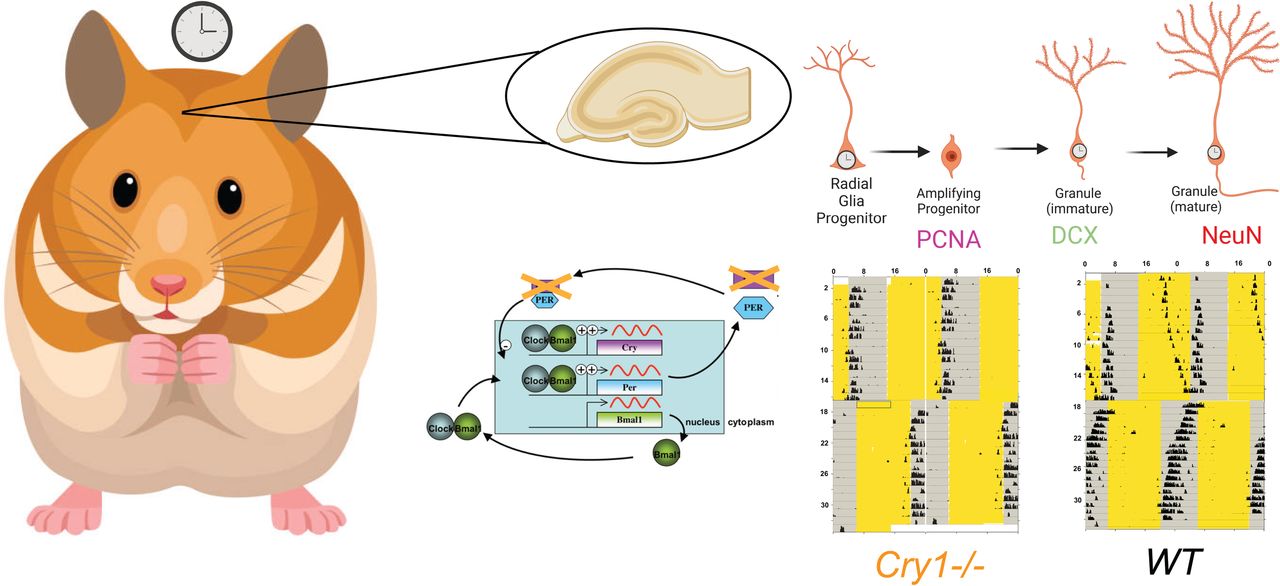2023-04-03 マサチューセッツ大学アマースト校
この研究は、3月31日に電子科学ジャーナル「eNeuro」に掲載されたもので、成人神経新生を調節する循環時計遺伝子であるクリプトクローム1(Cry 1)が、成人の海馬の脳内でニューロンの持続的な形成を調節することが示された。また、成人神経新生の乱れは認知症や精神疾患と関連している。
研究者らは、様々な疾患への影響だけでなく、神経新生にも悪影響を与える可能性があることを示唆している。
<関連情報>
- https://www.umass.edu/news/article/jet-lags-harmful-health-impacts-found-be-caused-biological-clock-misalignment
- https://www.eneuro.org/content/10/3/ENEURO.0359-22.2023
雌のシリアンハムスターにおけるサーカディアンフェーズシフトとDuper変異による成体神経新生の変化 Adult Neurogenesis Is Altered by Circadian Phase Shifts and the Duper Mutation in Female Syrian Hamsters
Michael Seifu Bahiru and Eric L. Bittman
eNeuro Published:6 March 2023
DOI: https://doi.org/10.1523/ENEURO.0359-22.2023

Abstract
Cell birth and survival in the adult hippocampus are regulated by a circadian clock. Rotating shift work and jet lag disrupt circadian rhythms and aggravate disease. Internal misalignment, a state in which abnormal phase relationships prevail between and within organs, is proposed to account for adverse effects of circadian disruption. This hypothesis has been difficult to test because phase shifts of the entraining cycle inevitably lead to transient desynchrony. Thus, it remains possible that phase shifts, regardless of internal desynchrony, account for adverse effects of circadian disruption and alter neurogenesis and cell fate. To address this question, we examined cell birth and differentiation in the duper Syrian hamster (Mesocricetus auratus), a Cry1-null mutant in which re-entrainment of locomotor rhythms is greatly accelerated. Adult females were subjected to alternating 8 h advances and delays at eight 16 d intervals. BrdU, a cell birth marker, was given midway through the experiment. Repeated phase shifts decreased the number of newborn non-neuronal cells in WT, but not in duper hamsters. The duper mutation increased the number of BrdU-IR cells that stained for NeuN, which marks neuronal differentiation. Immunocytochemical staining for proliferating cell nuclear antigen indicated no overall effect of genotype or repeated shifts on cell division rates after 131 days. Cell differentiation, assessed by doublecortin, was higher in duper hamsters but was not significantly altered by repeated phase shifts. Our results support the internal misalignment hypothesis and indicate that Cry1 regulates cell differentiation. Phase shifts may determine neuronal stem cell survival and time course of differentiation after cell birth. Figure created with BioRender.


